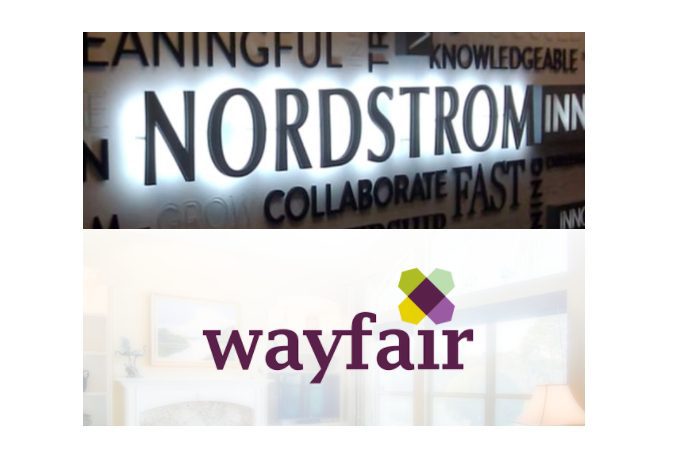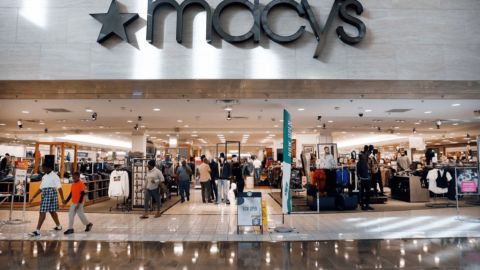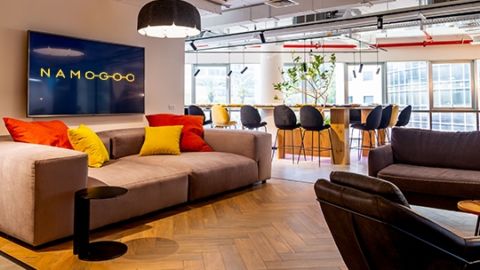In recent years, quarterly results for department stores and luxury retailers have often painted a picture of “doom and gloom.” Declining sales and traffic have forced these brands to close unprofitable stores, minimize inventory and resort to promotions and markdowns. There is a small silver lining, however. Wall Street appears to have adjusted to this new reality, tempering its expectations of what constitutes a successful quarter.
Thus far, Q2 has brought mixed results within these sectors, but many companies outperformed expectations set by Wall Street analysts:
-
Nordstrom was the biggest department store winner, while JCPenney and Dillard’s were the keenest disappointments;
-
Luxury brands such as Michael Kors and Ralph Lauren are slowly bringing life back to a struggling market; and
-
Wayfair is the latest high sales/high customer growth e-Commerce success story, but sustainability remains an ongoing concern in an Amazon-centric world.
Nordstrom Tops Department Store Segment, Shares Best Outlook
Nordstrom has bucked the trend of department store disappointment in a big way. Although the company’s quarterly net income fell slightly, from $117 million to $110 million, net sales rose 3.5% to $3.79 billion. More importantly, comparable sales increased 1.7%.
The retailer’s off-price strategy is clearly paying off: sales at Nordstrom Rack stores were up 3.1%, while Nordstromrack.com and HauteLook sales skyrocketed 27%. Even as sales at full-line U.S. Nordstrom stores fell 4.4%, the dip marks an improvement over the 6.5% drop in Q2 last year.
With a successful Q2, Nordstrom has updated its full-year outlook, adjusting projected net sales growth to 4%, an increase from the previous forecast of 3% to 4% growth. Nordstrom still expects comparable sales to remain flat, but it has increased the low end of its range for profits.
Chuck Grom, Consumer and Retail Equity Analyst at research advisory firm Gordon Haskett, noted in commentary provided to Retail TouchPoints that these results give Nordstrom the best outlook within the department store category: “The combination of: 1. Better comparable sales (+1.7% vs. our -0.1% estimate; led by strong digital outperformance); 2. Favorable trends during the company’s Anniversary Sale; 3. Continued good inventory discipline; and 4. A modest ~2.0% 2017 EPS guidance raise (at the mid-point) should be more than enough, in our view.”
Department Store Sector Treads Water In Quest Of Same Store Sales
More representative of the department store sector’s results in Q2 are Macy’s (with a 2.5% decline in same store sales), Kohl’s (a 0.4% drop) and Dillard’s (a 1% decrease). Two of the brands also took hits to their gross margins in Q2: Macy’s fell from 40.9% to 40.3%, while Dillard’s margins dropped from 29.2% to 26.9%. This suggests expenses are creeping up as brands try to turn inventory, and that heavy markdowns aren’t generating enough sales to compensate.
Macy’s and Kohl’s both reported earnings and sales results slightly ahead of analysts’ estimates, but Dillard’s took the opposite route, posting a $0.58 per share loss (totaling $17.1 million), when forecasts had the retailer making a $0.19 per share profit.
Off-price may be an option these brands will have to leverage — at least on a limited scale — to become competitive again. Macy’s Backstage currently adds approximately 6% in incremental sales to the 38 full-line Macy’s stores where these off-price alternatives operate today, the company told analysts in its conference call.
With that in mind, the brand appears to be taking a page out of Nordstrom’s playbook to compete against the off-price giants as part of its turnaround efforts.By the end of the year, Macy’s will decide how it’s going to expand the off-price chain within its stores, and this fall the retailer will launch a new loyalty program.
JCPenney Has $62 Million Net Loss After Closing 130+ Stores
JCPenney’s net loss widened to $62 million in Q2, with a 1.3% decline in same store sales in the wake of the company’s liquidation and closure of 138 stores. The massive liquidation was designed to trim excess inventory and better position the company for the remainder of the year.
“Although JCP’s numbers are not a disaster and represent a significant sequential improvement over the prior quarter, they are nevertheless underwhelming,” said Neil Saunders, Managing Director at GlobalData Retail in a research note. “The lack of progress on profit and same-store sales both highlight that the turnaround program is a long-term endeavor that will take some time to deliver.”
Michael Kors, Ralph Lauren Show Signs Of Turnaround
Iconic luxury brands Michael Kors and Ralph Lauren both beat Wall Street expectations for profit and revenue, as these companies have reevaluated their own operations.
Kors said profits fell 15% to $125 million while revenue declined 3.6%, but the company also raised its sales outlook for the full year, a sign that its turnaround efforts have been effective. With retail store sales increasing 10.1% and wholesale revenue decreasing 23%, it’s clear the brand is prioritizing its own channels and is willing to take a short-term hit elsewhere. The company recently acquired luxury footwear brand Jimmy Choo and intends to acquire more companies, both to grow its reach and position itself as a “luxury group.”
Ralph Lauren saw profits shoot up to $59.5 million, a massive improvement over the $22.3 million loss the year prior. The luxury brand saw sales decline 13% and comparable store sales drop 7%, but like Michael Kors, the retailer has responded by pulling back inventory from wholesale partners, reducing off-price sales, engaging in fewer promotional periods and closing 20% to 25% of underperforming department store distribution points. In total, the company lowered its inventory levels by 31% from a year earlier.
But despite these efforts, both Michael Kors and Ralph Lauren still have a long way to go before attaining consistent profitability and sales growth. For example, Ralph Lauren generated 69% of its operating profit from department stores and other retail partners in its latest fiscal year, according to data from Bloomberg Intelligence. So department stores are still a massive driver of exposure that will be difficult to replicate through another channel, even as sales in those locations dissipate.
Wayfair Stuns With Q2 Revenue, Customer Growth
One retailer that has capitalized on the constant changes in consumer preferences is e-Commerce home furnishing brand Wayfair. In Q2, the online retailer saw:
-
Direct retail net revenue, consisting of sales generated primarily through Wayfair’s sites, increase $346.8 million to $1.1 billion, up 45.9%;
-
Active customers increase 43% to 9.5 million;
-
Orders delivered increase 46.0% to 4.3 million; and
-
Net losses narrow from $48.3 million to $38.9 million.
In an era when Amazon has dominated everything from electronics to home goods, Wayfair’s continued growth as a pure play brand has been impressive. The company revealed that it now has seven million square feet of storage space, up from one million just 18 months ago. Because of this, delivery time for small packages has decreased to two days in major metropolitan cities and to 14 days for large packages.
Wayfair has also invested in a marketing campaign that includes TV commercials featuring customers dancing because they’re so happy about the furniture bargains they’ve gotten from the retailer.
Now the question turns to how long Wayfair can sustain this type of customer growth. Repeat customers placed 55% more orders in Q2, and that’s a great sign that Wayfair’s established customer base is very interested in buying new products. These repeat customers accounted for 61.3% of total orders in the period, up from 57.6% of the total last year. This means new customers are accounting for a smaller share of total purchases, which could indicate a slowdown in customer acquisition or trouble motivating new customers to spend more.
With Amazon having an 80 million-member Prime subscriber base that it could still engage if it intended to ramp up its home furnishings offering, it’s reasonable to think that the two retailers could collide in a battle for consumer attention in the near future.
“Nobody is ‘Amazon-proof,’ because the company has a quick learning curve (and willingness to spend/invest) whenever it decides to move into a category,” said Dick Seesel, Principal at Retailing In Focus LLC in a RetailWire discussion. “But Wayfair is in a better position than Amazon’s competitors in other industries: It has a niche, a following and a strategy that are serving it well right now. Something to watch: Will Wayfair decide down the road that it needs an omnichannel game plan through a footprint of brick-and-mortar showrooms or a strategic alliance with another furniture retailer?”













